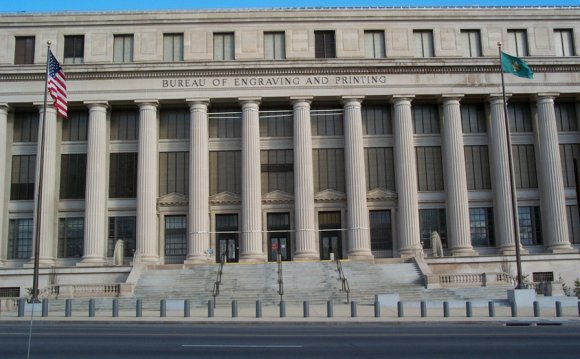
 But, it’s a big building, and it wasn’t clear to me on any map which was the front of the building. Once we were there, I found a sign with a map that I found very helpful. It shows the location of ticket booth and tour entrance, which are on opposite sides of the building. Just note that on this map, north points to the right.
But, it’s a big building, and it wasn’t clear to me on any map which was the front of the building. Once we were there, I found a sign with a map that I found very helpful. It shows the location of ticket booth and tour entrance, which are on opposite sides of the building. Just note that on this map, north points to the right.
The ticket booth opens at 8 a.m. The tickets you receive at the ticket booth are for a specific tour time. You will have a choice of which tour times that are still available. It is advisable to go to the ticket booth as soon as it opens because they do run out of tickets. According to their website, during the busy weeks of cherry blossom time, spring break, and Easter, you should plan to be in line no later than 6:30 or 7 a.m. We got in line at 8 a.m. (during a June visit) and the first available tickets were for 9:15 a.m. One person can get up to four tickets. This is important: if you have more than two kids, one of the parents can bring one of the children and they can get up to eight tickets, while the other parent sleeps in a little longer with the other kids. But one parent can’t get 5 or more tickets without bringing a child along. If you are planning your trip in advance, it would be significant less complicated to request the congressional tickets in advance. You’ll have a tour at 8:15 or 8:45 a.m., then the rest of your day will be free for other activities. When we visited, we also made a morning stop at the Daniel’s Story exhibit at the adjacent Holocaust Museum, had lunch, then spent the rest of the day touring the memorials.
We got in line at 8 a.m. (during a June visit) and the first available tickets were for 9:15 a.m. One person can get up to four tickets. This is important: if you have more than two kids, one of the parents can bring one of the children and they can get up to eight tickets, while the other parent sleeps in a little longer with the other kids. But one parent can’t get 5 or more tickets without bringing a child along. If you are planning your trip in advance, it would be significant less complicated to request the congressional tickets in advance. You’ll have a tour at 8:15 or 8:45 a.m., then the rest of your day will be free for other activities. When we visited, we also made a morning stop at the Daniel’s Story exhibit at the adjacent Holocaust Museum, had lunch, then spent the rest of the day touring the memorials.
 The tickets will tell you to arrive at least 10 minutes early for your tour. This is a good idea, because when you arrive for your tour, you will first be admitted into a waiting area that has exhibits to view. This set of models shows how the printing process works. First, grooves are cut into the printing plate.
The tickets will tell you to arrive at least 10 minutes early for your tour. This is a good idea, because when you arrive for your tour, you will first be admitted into a waiting area that has exhibits to view. This set of models shows how the printing process works. First, grooves are cut into the printing plate.
Then, ink is rolled onto the plate.
 Then, the excess ink is scraped off the plate.
Then, the excess ink is scraped off the plate.
The paper is pressed onto the plate.
The ink in the grooves is transferred to the paper.
This area also has several posters that describe the history of currency in general and in the United States.
Currency didn’t become green in the United States until 1861, when greenbacks were born.
These are just a couple of the many informational posters.
Have you ever wondered what a million dollars looks like? You can see it yourself in $10 bills.
You can also learn about security features of today’s currency that prevent counterfeiting.
RELATED VIDEO
















